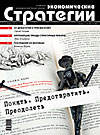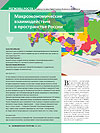Macroeconomic Interactions in the Space of Russia
The article presents results of the analysis of inter-regional economic relations conducted using the Applied multiregional interbranch model, mathematical concepts of economic equilibrium and the theory of cooperative games, as well as methods of coalitional analysis, according to which the calculations by all possible regions’ coalitions are carried out. The authors compare results of studies of the USSR’s economic space on the eve of its collapse (in the context of the Union republics) and the modern Russia (in the context of Federal Districts). Economic space of modern Russia is significantly more homogeneous than the USSR before its collapse. But the level of heterogeneity of the existing Russian space is still far too high. The main and the only one (among the Union republics) donor in the USSR space was the Russian Federation. The most large-scale “literally obscene” recipient was Ukraine. Federal districts of modern Russia are sub-dividedon in donors and recipients exactly in half (four/four). Donors of “the first level” — the North-West and Far Eastern Districts, of “the second level” — the Siberian and the Ural districts. The Central Federal District, figuratively speaking, is parasitizing on the “body of Russia”. Its consumption from the all-Russia Fund exceeds its contribution more than by one third of this total fund.



